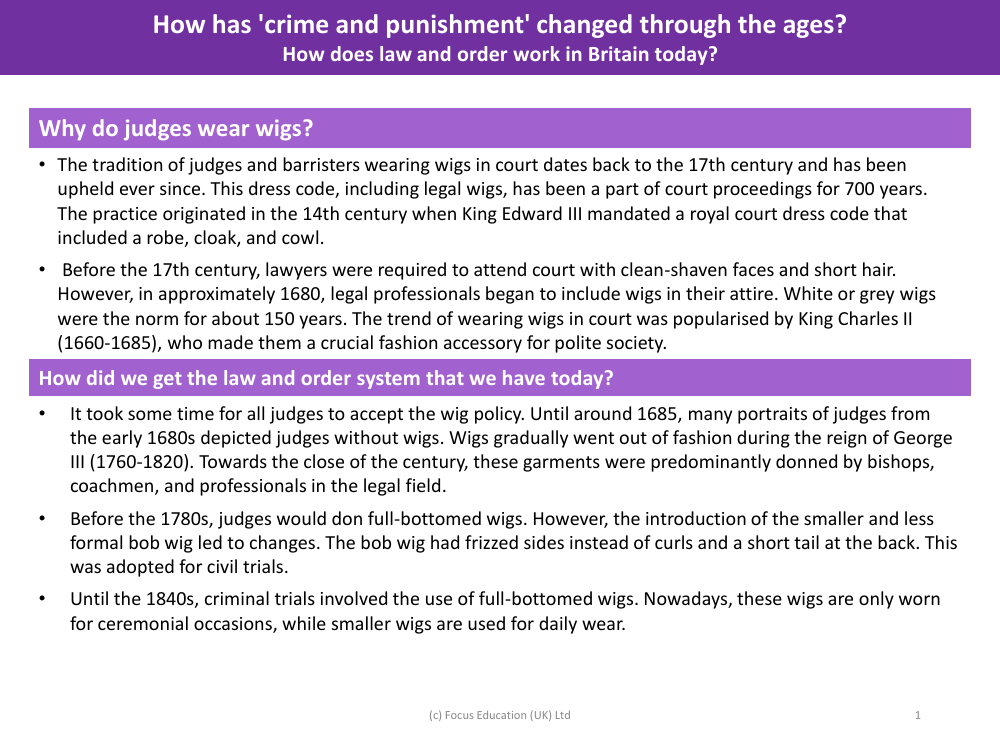Judges and law and order - Info sheet

History Resource Description
The tradition of judges and barristers wearing wigs in the courtroom is a practice with a rich history dating back to the 17th century. This distinctive dress code was established around 700 years ago, with its roots tracing back to the 14th century when King Edward III introduced a royal court dress code. This code required the wearing of a robe, cloak, and cowl. The move towards wigs began in the 1680s, before which lawyers were expected to appear in court with short hair and clean-shaven faces. The fashion of wearing white or grey wigs was popularised by King Charles II, who, during his reign from 1660 to 1685, made them an essential element of attire in polite society.
Adoption of the wig policy by judges was not immediate, with many portraits from the early 1680s still showing judges without wigs. It wasn't until the reign of George III, from 1760 to 1820, that wigs gradually fell out of general fashion and became more specifically associated with bishops, coachmen, and legal professionals. The legal attire evolved further with the introduction of the bob wig for civil trials, which featured frizzed sides and a short tail, replacing the earlier full-bottomed wigs. By the 1840s, full-bottomed wigs were reserved only for criminal trials and are now worn solely for ceremonial purposes, with smaller wigs being the standard for daily court wear.






